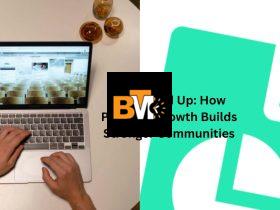In today’s demanding construction landscape, quality assurance isn’t just a checkmark on a project plan—it’s the cornerstone of sustainable, safe, and cost-effective infrastructure development. For engineers and contractors working in civil construction, establishing robust quality control measures is essential for project success and long-term reputation. Organizations like RSS Infrastructure have pioneered approaches that balance rigorous standards with practical implementation, creating a blueprint for excellence in the industry.
The Critical Nature of Quality in Civil Works
Quality in civil construction encompasses everything from material integrity to precision workmanship, comprehensive documentation, and adherence to both regulatory requirements and client specifications. Poor quality control can lead to structural failures, budget overruns, schedule delays, and potential liability issues that can persist long after project completion.
Key Components of Quality Assurance in Civil Construction
Material Testing and Verification
High-quality materials form the backbone of durable infrastructure. Implementing a systematic approach to material testing and verification ensures that every component meets engineering specifications before incorporation into the project.
Best Practices:
- Establish detailed material acceptance criteria aligned with project specifications
- Conduct regular batch testing of critical materials including concrete, steel, and aggregates
- Maintain comprehensive documentation of test results and material certifications
- Implement supplier qualification programs to evaluate reliability and quality history
- Create a material traceability system that tracks products from source to installation
Leading companies in civils in construction invest in establishing relationships with trusted suppliers and often create their own testing laboratories to ensure materials meet or exceed specifications without relying exclusively on manufacturer data.
Precision Engineering and Design Review
Quality begins at the design phase. Thorough design reviews can identify potential issues before construction begins, preventing costly rework and ensuring constructability.
Implementation Strategies:
- Conduct multi-disciplinary design reviews involving specialists from all relevant fields
- Utilize advanced modeling tools including Building Information Modeling (BIM) for clash detection
- Perform constructability analyses to ensure designs can be executed efficiently in field conditions
- Verify designs against applicable codes, standards, and best practices
- Document design decisions, calculations, and alternatives considered
RSS Infrastructure and similar industry leaders employ dedicated design review teams that include both experienced engineers and field personnel to bridge the gap between theoretical design and practical implementation.
Construction Methodologies and Execution
The execution phase of civil construction requires stringent oversight to ensure quality standards are maintained throughout the building process.
Quality Control Measures:
- Develop detailed work method statements for each construction activity
- Implement inspection and test plans (ITPs) with clearly defined hold points
- Conduct regular quality surveillance by qualified inspectors
- Utilize precision surveying and layout techniques
- Establish acceptance criteria for each completed element
Environmental Factors and Adaptability
Quality construction must account for environmental conditions and potential challenges that may impact integrity over time.
Environmental Considerations:
- Assess site-specific environmental conditions including soil properties, drainage patterns, and climate factors
- Incorporate appropriate mitigation measures for identified environmental risks
- Implement erosion and sedimentation control during construction
- Design for resilience against extreme weather events and changing climate conditions
- Consider long-term environmental sustainability in material selection and construction practices
Technology Integration for Quality Enhancement
Modern quality assurance relies increasingly on digital tools to streamline documentation, improve communication, and provide real-time visibility into quality metrics.
Digital QA/QC Tools:
- Mobile inspection applications that allow real-time field documentation
- Cloud-based document management systems for centralized access to specifications and drawings
- Digital form generation and workflow automation
- Real-time reporting dashboards to track quality performance indicators
- Electronic submittal and approval systems
Companies specializing in civils in construction, including RSS Infrastructure, have found that digital quality management systems significantly reduce documentation errors and improve overall quality outcomes by making information more accessible and standardizing reporting formats.
Advanced Monitoring and Testing Technologies
Technological advances have transformed the ability to monitor and verify construction quality with unprecedented precision.
Innovative Testing Methods:
- Ground-penetrating radar for non-destructive subsurface inspection
- Thermal imaging to detect thermal bridges, moisture issues, or installation defects
- Drone-based visual inspection and photogrammetry for inaccessible areas
- Concrete maturity monitoring using embedded sensors
- Laser scanning for dimensional verification and as-built documentation
Human Factors in Quality Assurance
Training and Competency Development
Even with advanced technologies, construction quality ultimately depends on the skills and knowledge of the workforce. Comprehensive training programs are essential for maintaining high standards.
Workforce Development Approaches:
- Implement structured training programs for all quality-related roles
- Establish clear competency requirements and verification processes
- Conduct regular toolbox talks focused on quality requirements
- Develop mentoring systems to transfer knowledge from experienced personnel
- Create educational pathways for continuous professional development
RSS Infrastructure has demonstrated that investing in workforce competency yields substantial returns in terms of reduced rework, improved efficiency, and enhanced project outcomes.
Quality Culture and Leadership Commitment
Quality initiatives cannot succeed without a supportive organizational culture and visible leadership commitment.
Fostering Quality Culture:
- Establish and communicate clear quality objectives at all project levels
- Recognize and reward quality performance
- Implement transparent reporting of quality issues without blame
- Encourage proactive identification and resolution of potential problems
- Demonstrate leadership engagement through regular site quality walks
Quality Control Systems and Frameworks
Comprehensive Quality Management Plans
Every civil construction project benefits from a tailored quality management plan that addresses project-specific requirements while maintaining consistency with organizational standards.
QMP Components:
- Project-specific quality objectives and key performance indicators
- Roles and responsibilities for quality management
- Required inspection and testing activities with acceptance criteria
- Document control and record management procedures
- Non-conformance management and corrective action processes
Third-Party Oversight and Verification
Independent verification provides an additional layer of quality assurance and helps maintain objectivity in quality assessment.
External Verification Methods:
- Engage specialized third-party inspection agencies for critical elements
- Conduct independent material testing through accredited laboratories
- Implement peer reviews for complex design solutions
- Utilize expert consultants for specialized technical areas
- Schedule regular external audits of quality management systems
Many projects undertaken by organizations like RSS Infrastructure incorporate independent verification at critical project stages to ensure compliance with specifications and identify potential improvement opportunities.
Continuous Improvement in Construction Quality
Learning from Experience: Post-Project Evaluation
Quality systems should incorporate mechanisms for capturing lessons learned and applying them to future projects.
Improvement Methodologies:
- Conduct detailed post-project quality reviews
- Analyze trends in non-conformance data to identify systemic issues
- Document and share lessons learned across the organization
- Revise standard procedures based on field experience
- Benchmark performance against industry standards and best practices
Embracing Innovation and Research
Leading organizations in civils in construction maintain a focus on innovation and research to continuously elevate quality standards.
Innovation Focus Areas:
- Alternative materials with improved performance characteristics
- Advanced construction methods that enhance quality control
- Predictive analytics for quality risk management
- Prefabrication and modular construction for controlled quality
- Integrated digital platforms for comprehensive quality management
Conclusion
As infrastructure demands grow more complex and the consequences of quality failures become increasingly significant, the commitment to excellence in civil construction must remain paramount. Organizations like RSS Infrastructure that prioritize comprehensive quality management systems, embrace technological innovation, invest in workforce development, and maintain a culture of continuous improvement will continue to set the standard for the industry.







Leave a Reply